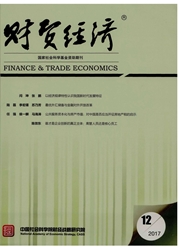

 中文摘要:
中文摘要:
“保护中间品贸易,开放最终产氐贸易”是全球价值链体系下FTA原产地规则的经济逻辑。本文从中间品和最终品两个维度,剖析了在“纱后原则”以及关税歧视双重机制作用下TPP原产地规则对亚太地区纺织服装贸易格局以及中国纺织服装出口竞争力的潜在影响。结果表明:在中间品层面,多数TPP成员国均与中国存在密切的纺织中间品贸易关联,“纱后原则”的实施将在一定程度上割裂业已形成的亚太纺织品生产网络,在给以越南为代表的TPP成员国造成效率损失的同时还会通过贸易转移效应对中国纺织品出口造成不利影响;在最终产品层面,TPP原产地规则导致的关税歧视给中国服装出口带来的贸易转移效应相对有限,中国更加需要警惕的是纺织品贸易分工格局变化通过产业关联给下游服装行业带来的中长期影响。
 英文摘要:
英文摘要:
Protecting trade in intermediate goods while liberalizing trade in final goods is the economic jurisdiction of rules of origin in global value chains. From the dimensions of intermediate good and final goods, this paper analyzes the potential impact of rules of origin of TPP on the Asia-Pacific trade of textiles and apparels and the competitiveness of China textiles and apparels export through the channel of "yarn forward" rule and tariff discrimination. The result shows that there exists significant trade linkages between most of TPP members and China, the reinforcement of "yarn forward" rule will cut apart the current production network in Asia-Pacific and cause efficiency loss to TPP members and negative effects on China textiles export. Trade diversion effect caused by tariff discrimination against apparel exports of China will be limited. But China has to pay more attention to the sequential effect caused by the production and trade pattern change of textiles due to the industrial linkages in the long term.
 同期刊论文项目
同期刊论文项目
 同项目期刊论文
同项目期刊论文
 期刊信息
期刊信息
